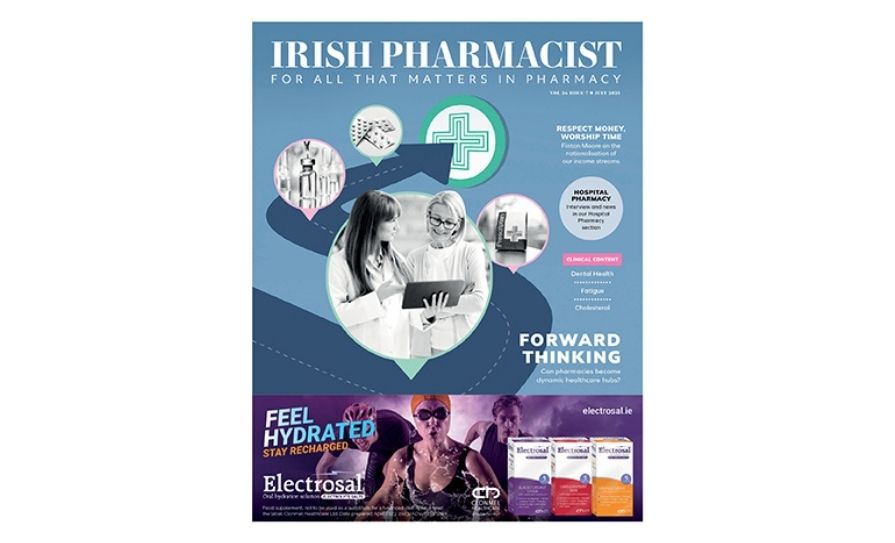Dr Des Corrigan examines the symbolic and therapeutic qualities of the gifts given by the Three Wise Men
The first Christmas presents were probably those given (or ‘gifted’, if you prefer that modern abomination) by Melchior, Gaspar and Balthazar, also known as the Three Wise Men, or the Three Kings, or the Magi. The Gospels say that they presented the infant Jesus with gold, symbolising his kingship on earth; frankincense as a sign of his deity; and myrrh, representing his eventual death. In doing so, they created a precedent that drives most of us into a distracted frenzy at this time of the year as we hunt for that perfect present.
While the gifts from the Magi were symbolic, they also had a monetary and a medicinal value that continues to the present day.
Gold (aurum) is of course the ultimate precious metal and according to a 1988 article in the Journal of the Royal Society of Medicine, the first modern (ie, 20th Century) medical use of gold was in cases of tuberculosis, where sodium auriothiosulphate was given intramuscularly.
Its use in rheumatoid arthritis dates back to 1930 and both sodium auriothiosulphate and sodium aurothiomalate still featured in the 1987 edition of the BNF. Nowadays, gold is used in nanomedicine, because the non-toxic nature of the nanoparticles and their compatibility with biological systems makes them ideal for use as carriers of chemotherapeutic drugs such as methotrexate, doxorubicin and paclitaxel.
The nanoparticles are also useful in diagnostics because they help in photo-imaging tumours, making it easier for surgeons to distinguish between a tumour and healthy cells. They are also used as photosensitisers in photodynamic therapy that uses light and tissue oxygen to create reactive oxygen species that cause cell death by apoptosis. A number of clinical trials involving gold nanoparticles in other diseases are ongoing, according to a 2018 review in the International Journal of Molecular Sciences.
Both myrrh and frankincense are plant products that arise from spontaneous cracks or deliberate scraping of the stem bark of various bushy trees growing in North East Africa and Arabia. What exudes is technically an oleo-gum resin consisting of a complex mixture of essential oil (responsible for the characteristic smell of incense), a carbohydrate-based gum, and resin acids.
Frankincense is derived from various species of boswellia, whereas myrrh comes from species of commiphora, chiefly C.myrrha, aka C.molmol. Inevitably, the characteristic resin acids from incense are called boswellic acids, while those from myrrh are known as commiphoric acids.
Myrrh is the subject of a Community Herbal Monograph published by the EMA. It is a traditional herbal medicinal product (THMP) for the treatment of minor ulcers and inflammations of the mouth (stomatitis and gingivitis). It is also a THMP for treatment of minor wounds and boils (furuncles). The original Assessment Report (AR) from the EMA dated 2011 noted that there were no recorded clinical studies to support the indication claims, but that pharmacological plausibility was based on myrrh’s potent antibacterial activity against Ps.aeruginosa, Staph aureus and E.coli, as well as local anaesthetic and anti-inflammatory effects in animals.
Traditional medical use of frankincense dates back to around 2800BC as a fumigant, in mummification, for wounds, and for UTIs
A 2018 addendum to the AR reviewed newer studies that showed wound-healing effects in mouse dermal fibroblast cells, anti-inflammatory, antispasmodic and antihyperlipidaemic effects in rats, and analgesic effects in mice.
This latter activity is supported by the results of a pilot RCT of a powdered extract administered to 89 men and 95 women. The extract showed analgesic activity against headache, muscle, joint and low-back pain and menstrual cramps. A more pertinent study involved an oral muco-adhesive gel containing myrrh used by 30 patients with recurrent aphthous stomatitis (mouth ulcers, to you and me). Compared to the vehicle gel on its own, there were reductions in ulcer size, pain, erythema and exudation levels when the myrrh product was applied four times daily for five days.
Unlike myrrh, frankincense is not the subject of a CHM from the EMA, although the clinical evidence for its medical use is far stronger. Most frankincense, also known as olibanum, comes from Oman, Yemen and Somalia from Boswellia serrata (mainly). Its best known use is in religious and cultural ceremonies all over the world. Traditional medical use dates back to around 2800BC as a fumigant, in mummification, for wounds, and for UTIs. In Ayurvedic medicine, for example, it is used as an anti-inflammatory, antiarthritic and analgesic.
Recent European use has been in chronic inflammatory conditions such as arthritis and irritable bowel disease (IBD).
The essential oil is highly antibacterial, but the major active constituents are the boswellic acids found in the resin. It is claimed that acetyl-11-keto-beta-boswellic acid (AKBA) is the most active, followed by 11-keto-beta-boswellic acid (KBA), and beta-boswellic acid itself (BBA), but recent pharmacokinetic work has shown that plasma levels of AKBA and KBA are very low and that there are higher levels of BBA.
The boswellic acids are pentacyclic triterpenes whose structures resemble those of steroids, but the mode of action of AKBA in particular involves inhibition of 5-lipoxygenase. BBA, on the other hand, inhibits microsomal prostaglandin E synthase 1. AKBA has been shown to be effective in a number of inflammatory diseases, including arthritis and colitis.
A 2020 paper from the Department of Gastroenterology and Clinical Medicine at Tallaght Hospital reviewed studies of boswellia serrata extract (BSE) in animal models of colitis and noted decreases in cytokine levels. However, the clinical trial evidence in patients with Crohn’s disease was mixed.
I previously mentioned boswellia in an article on antiarthritic ‘herbs’ in June. Many clinical trials have used boswellia extracts or the acids in combination with turmeric and/or MSM. While clinically significant effects on various arthritis parameters were recorded in those studies, the use of combination products does tend to muddy the waters in trying to work out the extent to which any one component influences activity. Thankfully, trials have been conducted on frankincense as a mono-product.
The Cochrane Review in 2015 evaluated five studies involving three different BSEs. Two studies were deemed to be of high quality and indicated that 90 days’ treatment with a BSE enriched with boswellic acids improved pain symptoms by a mean of 17 points, with a number needed to treat of 2. The extract improved physical function on the WOMAC Osteoarthritis Index by 8 points, leading to the authors conservatively concluding: “We cannot exclude a clinically important benefit in some people.”
How begrudging can you get?
It is clear that all three materials were highly valuable and a sign not only of the Magi’s huge wealth, but also of the depth of their wisdom and knowledge of the medicinal benefits of the resins, in particular. All of us could do with a similar gift from one or more wise persons, namely a safe and effective vaccine against SARS-coronavirus-2. Let us hope we do not have to wait too long or in vain.
In wishing you and yours a safe and peaceful Christmas and an equally safe New Year, I hope we all get that present we so desperately need.








